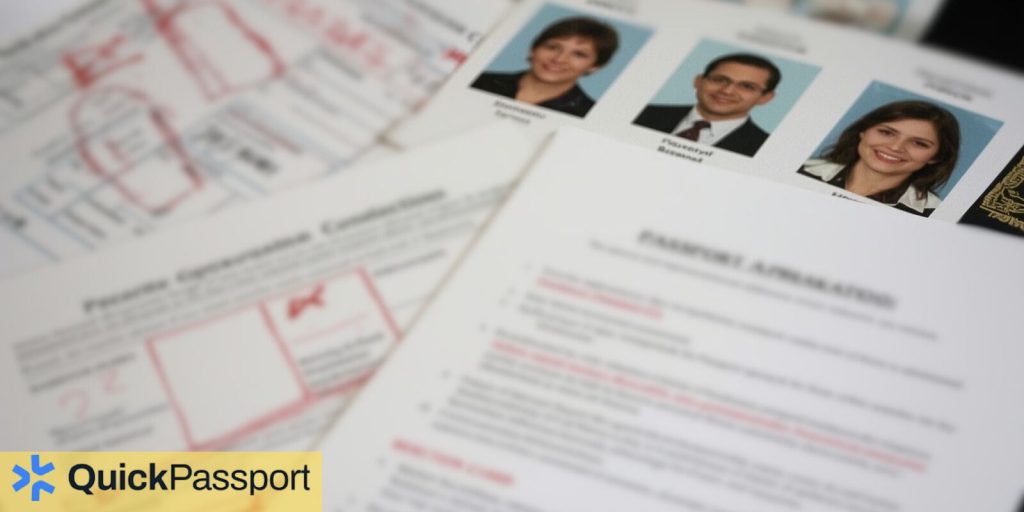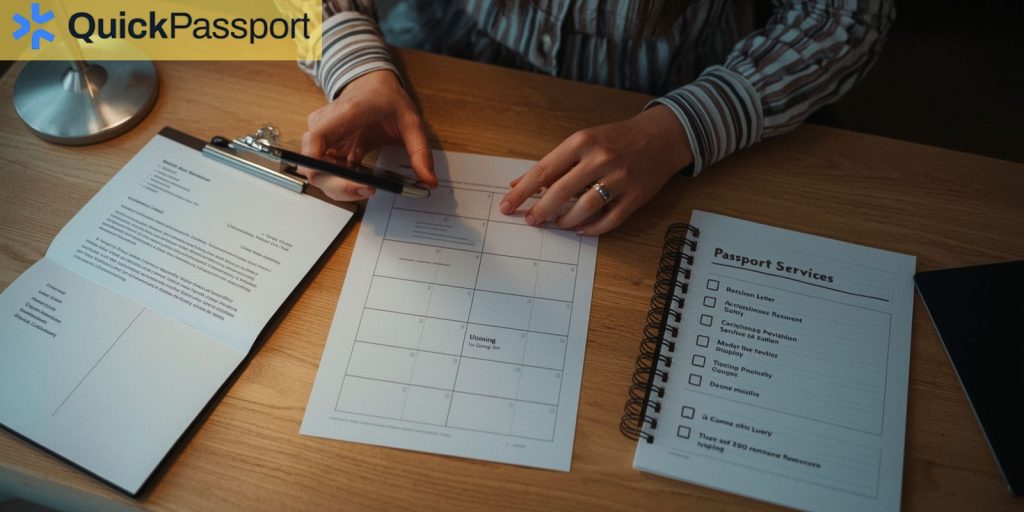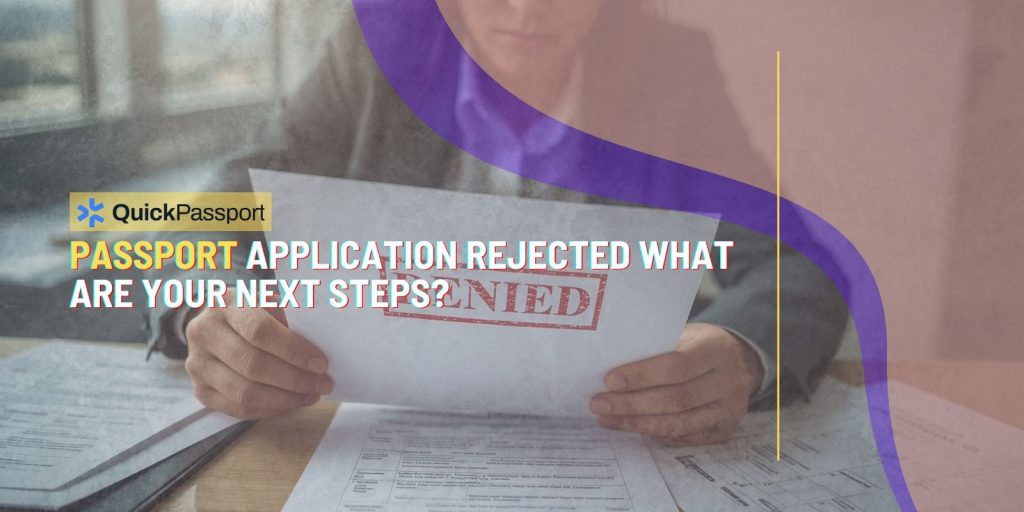Receiving a passport application rejection can be one of the most frustrating experiences, especially when you have important travel plans on the horizon. Whether you’re planning a long-awaited vacation, a crucial business trip, or need to visit family abroad, a rejected passport application can throw your entire schedule into chaos. The good news is that a rejection doesn’t mean the end of your travel dreams – it simply means you need to understand what went wrong and take the appropriate steps to correct the issues.
When your passport application is rejected, the first emotion you’ll likely experience is panic, followed by confusion about what to do next. The U.S. State Department processes millions of passport applications each year, and while the majority are approved without issue, rejections do occur for various reasons. Understanding these reasons and knowing your options can help you navigate this challenging situation more effectively.
The most important thing to remember is that time is of the essence when dealing with a rejected passport application. If you have upcoming travel plans, every day counts, and taking swift, informed action can make the difference between making your trip and having to cancel or postpone it. The rejection notice you receive will typically outline the specific reasons for the denial, but understanding how to interpret this information and what steps to take next requires careful consideration.
Most passport application rejections stem from documentation issues, such as insufficient proof of citizenship, inadequate identification, missing signatures, or problems with passport photos that don’t meet the strict requirements set by the State Department. Other common reasons include discrepancies in personal information, issues with previous passport records, or problems with the application form itself. Regardless of the reason for rejection, there are established procedures and options available to help you resolve the issues and obtain your passport.
The key to successfully overcoming a passport application rejection lies in understanding the specific reason for the denial, gathering the correct documentation to address the issues, and choosing the most appropriate method for resubmission based on your timeline and circumstances. With the right approach and proper guidance, most rejected passport applications can be successfully resubmitted and approved, allowing you to proceed with your travel plans.
Key Takeaways
- Act quickly when you receive a rejection notice – Time is critical, especially if you have upcoming travel plans. Review the rejection letter immediately to understand the specific issues that need to be addressed.
- Understand the most common rejection reasons – Documentation problems, insufficient proof of citizenship, inadequate identification, photo issues, and form errors account for the majority of passport application rejections.
- Gather all required corrective documentation – Before resubmitting, ensure you have obtained all necessary documents to address every issue mentioned in the rejection notice.
- Choose the appropriate processing method – Depending on your travel timeline, you may need expedited processing, emergency services, or can use standard processing for your corrected application.
- Consider professional assistance – Passport service companies can help expedite the correction process and ensure your resubmission meets all requirements to avoid further delays.
- Keep detailed records – Maintain copies of all correspondence, documentation, and submission receipts to track your application progress and provide reference if issues arise.
- Understand your refund options – In some cases, you may be eligible for partial refunds of fees paid for rejected applications, though processing fees are typically non-refundable.
- Plan for potential delays – Even with expedited processing, correcting and resubmitting a rejected application takes time, so adjust your travel plans accordingly and consider travel insurance for protection.
Understanding Passport Application Rejections: An Overview
Passport application rejections occur when the U.S. State Department determines that an application does not meet the established requirements for passport issuance. These rejections are not arbitrary decisions but result from specific deficiencies that prevent the government from verifying your identity, citizenship, or eligibility for a U.S. passport. Understanding the systematic approach used by passport agencies can help you better comprehend why your application was rejected and what needs to be corrected.

The passport application review process involves multiple checkpoints where trained personnel examine every aspect of your submission. They verify that all required forms are completed correctly, that supporting documentation is authentic and adequate, that photographs meet technical specifications, and that there are no discrepancies or red flags in the information provided. When any element fails to meet the strict standards, the application is rejected rather than delayed for clarification.
Most rejections fall into several predictable categories. Documentation issues represent the largest category, including situations where applicants fail to provide adequate proof of U.S. citizenship, submit expired or insufficient identification, or provide documents that don’t clearly establish their identity. Form-related problems constitute another significant category, encompassing incomplete applications, missing signatures, incorrect information, or forms that have been altered or damaged.
Photo-related rejections are surprisingly common, as passport photos must meet very specific technical requirements regarding size, composition, lighting, background, and the applicant’s expression and positioning. Even minor deviations from these requirements can result in rejection. Additionally, rejections can occur due to issues with previous passport records, concerns about the applicant’s eligibility, or problems with the application fee payment.
When your application is rejected, you’ll receive a detailed explanation of the reasons for denial, along with instructions on how to address the issues. This communication is crucial for understanding exactly what needs to be corrected before resubmission. The rejection notice will also inform you about any fees that may be refunded and provide guidance on the next steps in the process.
Common Reasons for Passport Application Rejection
Understanding the most frequent causes of passport application rejections can help you identify what went wrong with your submission and ensure you address all issues before reapplying. The State Department maintains strict standards for passport issuance, and even seemingly minor oversights can result in rejection.
Insufficient proof of citizenship represents one of the most common rejection reasons. Many applicants assume that a driver’s license or social security card constitutes adequate proof of citizenship, but these documents only establish identity or legal presence, not citizenship status. Acceptable proof of citizenship includes a certified birth certificate issued by a vital records office, a previous U.S. passport, a Certificate of Naturalization, or a Certificate of Citizenship. Birth certificates must be official copies with raised seals – photocopies, hospital certificates, or delayed birth certificates may not be accepted.
Identification problems constitute another major category of rejections. The State Department requires current, valid identification that clearly shows your name, photograph, and signature. Acceptable forms include a driver’s license, military ID, or government employee ID. Expired identification, student IDs, or identification that doesn’t match the name on your application can result in rejection. Additionally, if your current identification shows a different name than your citizenship documents, you must provide legal documentation of the name change, such as a marriage certificate or court order.
Passport photograph rejections are extremely common due to the strict technical requirements. Photos must be 2×2 inches, taken within the last six months, show a clear front view of your face with a neutral expression, and feature a plain white or off-white background. Common photo-related rejection reasons include incorrect sizing, shadows on the face or background, wearing glasses, smiling or showing teeth, poor image quality, or backgrounds that aren’t the proper color. Even professional photos can be rejected if they don’t meet these precise specifications.
Form completion errors also frequently result in rejections. The DS-11 application form must be completed entirely in black ink, with no white-out or cross-outs. Missing information, illegible handwriting, or inconsistencies between the form and supporting documents can trigger rejection. Additionally, the form must be signed in the presence of an authorized acceptance agent – pre-signing the form at home will result in rejection.
Payment issues, while less common, can also cause rejections. This includes insufficient fees, returned checks, or problems with money order payments. The State Department requires exact fees, and underpayment will result in rejection of the entire application.
Immediate Steps to Take After Receiving a Rejection Notice
The moment you receive a passport application rejection notice, your response strategy can significantly impact how quickly you can resolve the issues and obtain your passport. The rejection letter contains critical information that will guide your next steps, so careful review and immediate action are essential, particularly if you have upcoming travel plans.

Start by thoroughly reading the entire rejection notice, paying close attention to the specific reasons listed for the denial. The State Department provides detailed explanations for each rejection reason, and understanding these specifics is crucial for preparing a successful resubmission. Make note of every issue mentioned, as failing to address even one problem will likely result in another rejection. Some rejection notices may list multiple issues that need to be corrected simultaneously.
Immediately assess your travel timeline and determine what level of service you’ll need for your corrected application. If you have travel plans within the next few weeks, you’ll likely need expedited processing or emergency passport services. Standard processing takes 6-8 weeks, expedited service takes 2-3 weeks, and emergency services can provide a passport within 72 hours for qualifying urgent travel. Understanding these timeframes will help you choose the appropriate service level and adjust your travel plans if necessary.
Begin gathering the correct documentation to address each rejection reason. If your citizenship documentation was insufficient, obtain a certified copy of your birth certificate from the vital records office in your birth state. If your identification was expired or inadequate, renew your driver’s license or obtain acceptable alternative identification. For photo issues, schedule a new passport photo session with a photographer experienced in passport requirements, or use a passport photo service that guarantees acceptance.
Contact the passport agency or acceptance facility if you have questions about the rejection reasons or need clarification about acceptable documentation. The customer service representatives can provide valuable guidance about specific requirements and help ensure you’re gathering the correct materials for resubmission. Don’t assume you understand the requirements – when in doubt, ask for clarification to avoid another rejection.
Consider whether you need professional assistance to expedite the correction process. Passport service companies specialize in handling rejected applications and can often identify potential issues before resubmission, saving valuable time. These services are particularly beneficial if you have complex documentation issues, tight travel deadlines, or want expert review of your corrected application before submission.
Review your travel plans and consider purchasing travel insurance if you haven’t already. Even with expedited processing, there’s always a risk of additional delays, and travel insurance can protect your financial investment in flights, hotels, and other non-refundable travel expenses if you need to postpone your trip due to passport delays.
Resubmission Process and Requirements
Successfully resubmitting a rejected passport application requires careful attention to detail and strict adherence to the State Department’s requirements. The resubmission process is essentially starting over with a new application, but with the advantage of knowing exactly what issues need to be corrected based on your rejection notice.
You’ll need to complete a new DS-11 application form, as the original rejected application cannot be amended or reused. Take extra care when completing this form, ensuring all information is accurate, complete, and written clearly in black ink. Double-check that all information matches your supporting documents exactly, including spelling of names, dates, and places of birth. Any discrepancies between your application and supporting documents can result in another rejection.
Gather all required supporting documents, ensuring they directly address every issue mentioned in your rejection notice. If citizenship documentation was the problem, provide the specific type of document requested in the rejection notice. If multiple forms of identification were requested, ensure you have all required documents. For name change issues, include all necessary legal documentation showing the progression of name changes from your birth certificate to your current identification.
Obtain new passport photographs that meet all State Department requirements. Even if photos weren’t mentioned in your rejection notice, it’s often wise to get new photos to ensure they’re current and meet all specifications. Work with a photographer who understands passport photo requirements, or use a professional passport photo service. Keep the photo receipt, as some services guarantee acceptance and will provide free retakes if photos are rejected.
Determine the appropriate submission method based on your timeline. For standard processing, you can submit your application at any passport acceptance facility, including post offices, libraries, and clerk of court offices. For expedited processing, you can submit at acceptance facilities and pay the additional expedite fee, or apply directly at a passport agency if you have travel within two weeks. Emergency passport services require an appointment at a passport agency and proof of urgent travel needs.
Calculate the correct fees for your resubmission. You’ll need to pay the full application fee again, as the original payment was for processing the rejected application. If you’re requesting expedited service, add the expedite fee. If you’re using overnight delivery services for faster return of your passport, include those fees as well. Payment must be exact and in the form specified by the accepting facility.
Keep detailed records of your resubmission, including copies of all documents, receipts for fees paid, and tracking information if you’re mailing your application. This documentation will be valuable for tracking your application status and resolving any issues that might arise during processing. Consider using certified mail or overnight delivery services that provide tracking and delivery confirmation.
Expedited Processing Options for Rejected Applications
When your passport application has been rejected and you’re facing tight travel deadlines, understanding the various expedited processing options becomes crucial for salvaging your travel plans. The State Department offers several levels of expedited service, each designed for different urgency levels and circumstances.

Expedited processing is the most commonly used fast-track option, reducing processing time from the standard 6-8 weeks to 2-3 weeks. This service is available at all passport acceptance facilities and requires an additional fee beyond the standard application cost. Expedited processing is ideal when you have travel plans 4-6 weeks out and want to ensure your passport arrives with time to spare. You can request expedited processing when submitting your corrected application at any post office, library, or courthouse that accepts passport applications.
For more urgent situations, you can apply directly at a passport agency, which are located in major cities across the country. Passport agencies provide expedited processing and can often process applications more quickly than the standard expedited timeline. To use a passport agency, you must make an appointment and provide proof of travel within two weeks (or four weeks if you need a visa). Appointments can be challenging to secure during peak travel seasons, so call as soon as you receive your rejection notice.
Emergency passport services represent the fastest option, capable of providing a passport within 72 hours for qualifying urgent travel situations. These services are available only at passport agencies and require proof of life-or-death emergencies or urgent business travel that couldn’t be anticipated. Emergency services require extensive documentation of the urgent situation and come with additional fees. The definition of “emergency” is strictly interpreted, and business meetings or vacation travel typically don’t qualify.
Third-party passport expediting services offer another option for accelerating the correction and resubmission process. Companies like QuickPassport – Seattle specialize in handling rejected applications and can often navigate the system more efficiently than individual applicants. These services can review your rejection notice, help gather correct documentation, ensure your resubmission meets all requirements, and hand-carry your application through the process. While these services charge additional fees, they can save valuable time and reduce the risk of subsequent rejections.
When choosing expedited options, consider the total timeline from correction to receipt of your passport. Even emergency services require time to gather correct documentation and address rejection issues. Factor in weekends and holidays, which can extend processing times. If your travel date is very close, you may need to consider postponing your trip or exploring alternative travel documents like passport cards for land travel to Canada or Mexico.
Regional passport agencies offer another expedited option, particularly useful if you live near one of these facilities. These agencies can provide same-day service in some cases, but require appointments and proof of urgent travel. They also offer the advantage of face-to-face consultation, which can be valuable when dealing with complex rejection issues or unusual documentation requirements.
Frequently Asked Questions
Can I get a refund if my passport application is rejected?
Partial refunds may be available depending on the reason for rejection. The execution fee (paid to the acceptance facility) is typically refundable, but the processing fee paid to the State Department is generally non-refundable as it covers the cost of reviewing your application. If you paid for expedited service and your application was rejected before expedited processing began, you may be eligible for a refund of the expedite fee.
How long do I have to resubmit after a rejection?
There’s no specific deadline for resubmitting a rejected passport application. However, if you have upcoming travel plans, time is critical. You’ll need to submit a completely new application with corrected documentation, and processing times start over from the date of resubmission.
Will a previous rejection affect my new application?
A previous rejection won’t negatively impact your new application as long as you’ve addressed all the issues mentioned in the rejection notice. However, if you resubmit without correcting the problems, you’ll likely face another rejection and additional delays.
Can I appeal a passport application rejection?
There’s no formal appeals process for passport application rejections. Instead, you must correct the issues identified in the rejection notice and resubmit a new application. If you believe the rejection was in error, you can contact the National Passport Information Center for clarification.
What happens to my documents when an application is rejected?
Original documents submitted with rejected applications are typically returned to you along with the rejection notice. However, it’s always recommended to submit copies when possible and keep originals for your records.
Can I use a different acceptance facility for my resubmission?
Yes, you can submit your corrected application at any authorized passport acceptance facility. You’re not required to use the same location where you submitted your original application.
Is expedited processing guaranteed to meet my travel date?
Expedited processing times are estimates, not guarantees. While the State Department makes every effort to meet published timeframes, unexpected delays can occur. It’s always wise to apply as early as possible and consider travel insurance to protect against potential delays.
Should I contact my congressional representative for help with a rejected application?
Congressional offices can sometimes assist with passport issues, particularly if you’re facing unusual circumstances or have urgent travel needs. However, they cannot override rejection reasons or bypass standard requirements – you’ll still need to provide correct documentation and follow proper procedures.
Conclusion
Dealing with a rejected passport application can be stressful and overwhelming, but it’s important to remember that most rejections can be successfully resolved with the right approach and proper documentation. The key to overcoming a passport application rejection lies in understanding the specific reasons for denial, gathering the correct supporting materials, and choosing the appropriate processing method based on your travel timeline.
Time is your most valuable asset when dealing with a rejected passport application. The sooner you begin addressing the issues identified in your rejection notice, the better your chances of obtaining your passport before your planned travel date. Don’t let frustration or confusion delay your response – take immediate action to review the rejection reasons, gather correct documentation, and prepare for resubmission.
Remember that professional assistance is available if you’re struggling with complex rejection issues or facing tight deadlines. Services like QuickPassport – Seattle specialize in helping applicants navigate the passport process efficiently and can often expedite the correction and resubmission process. While these services involve additional costs, they can save valuable time and reduce the stress of handling rejections on your own.
Most importantly, don’t let a passport application rejection discourage you from pursuing your travel plans. With persistence, attention to detail, and proper planning, you can overcome the initial setback and obtain your passport. Use this experience as a learning opportunity to ensure future passport applications are submitted correctly the first time, and always allow extra time for passport processing when planning international travel.






